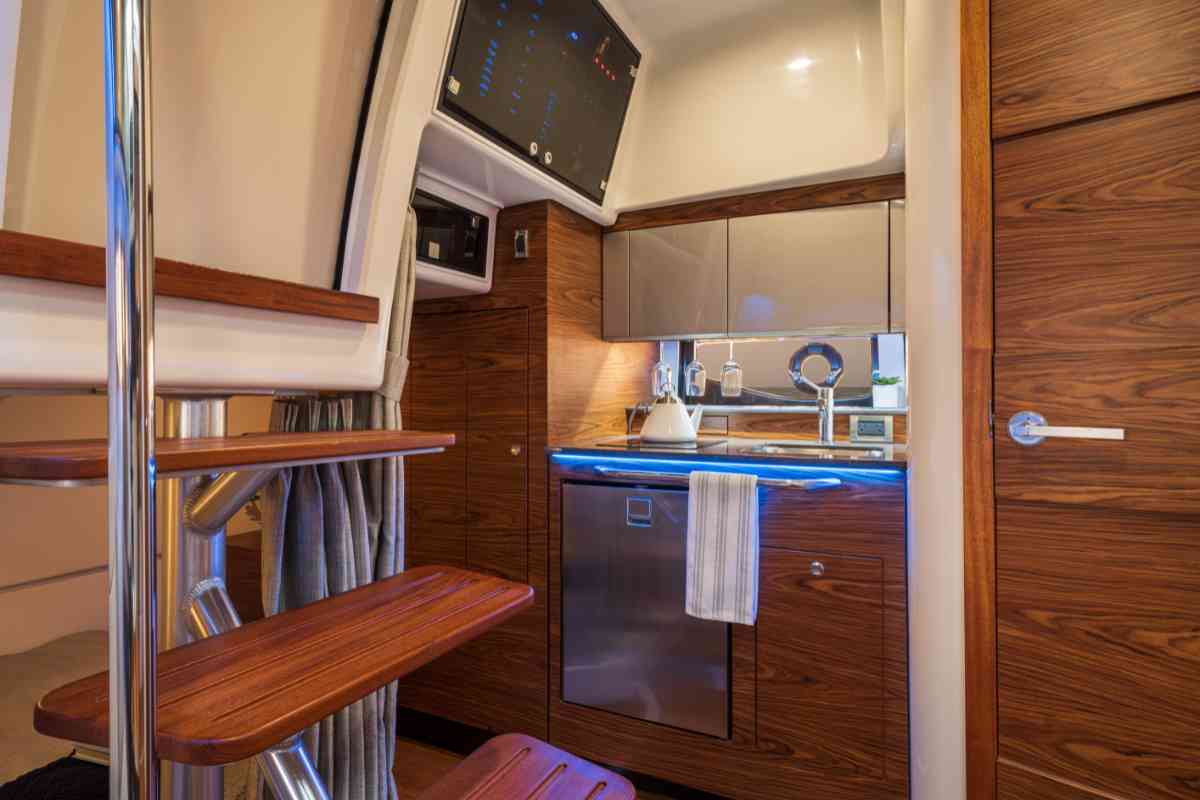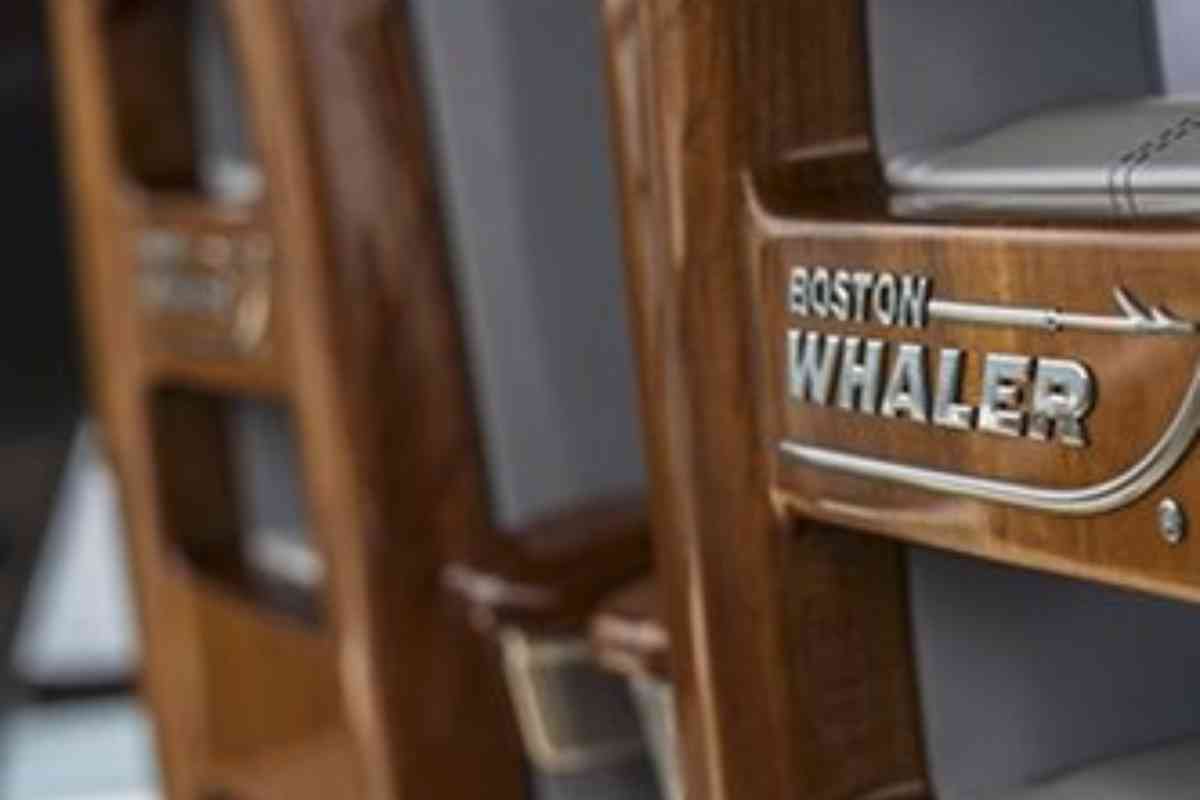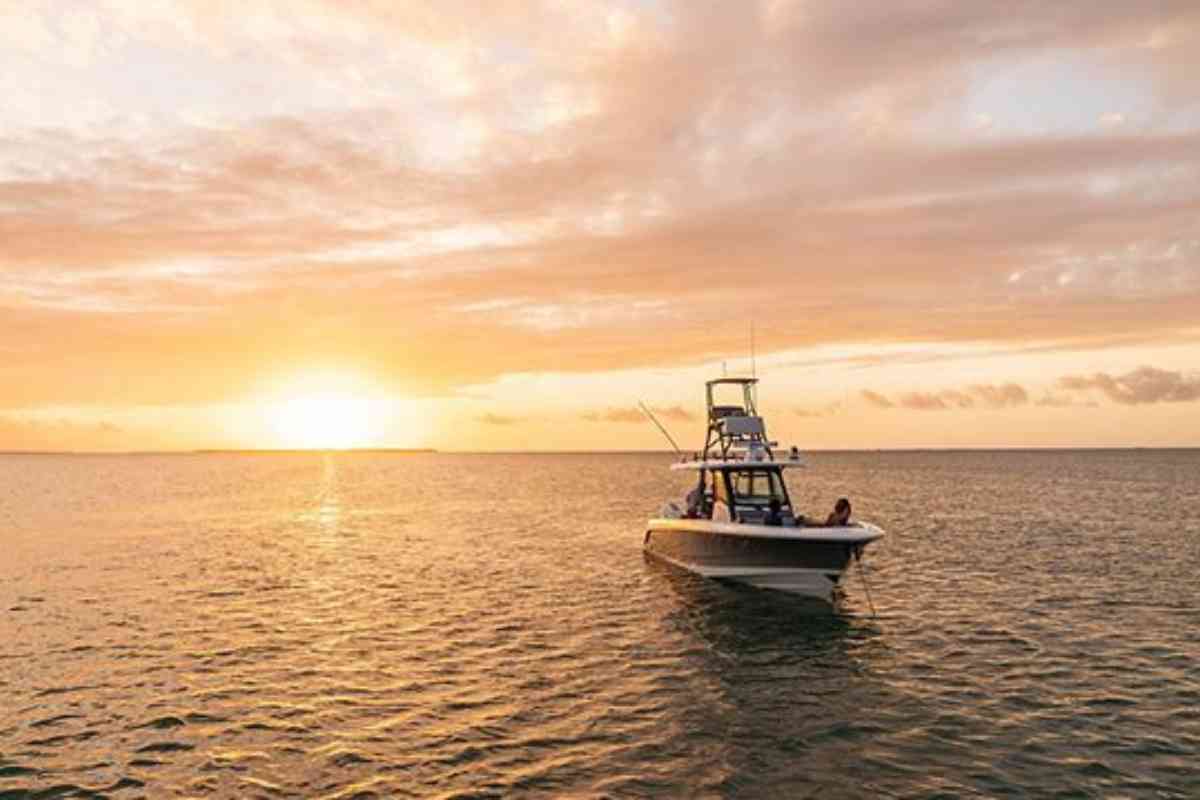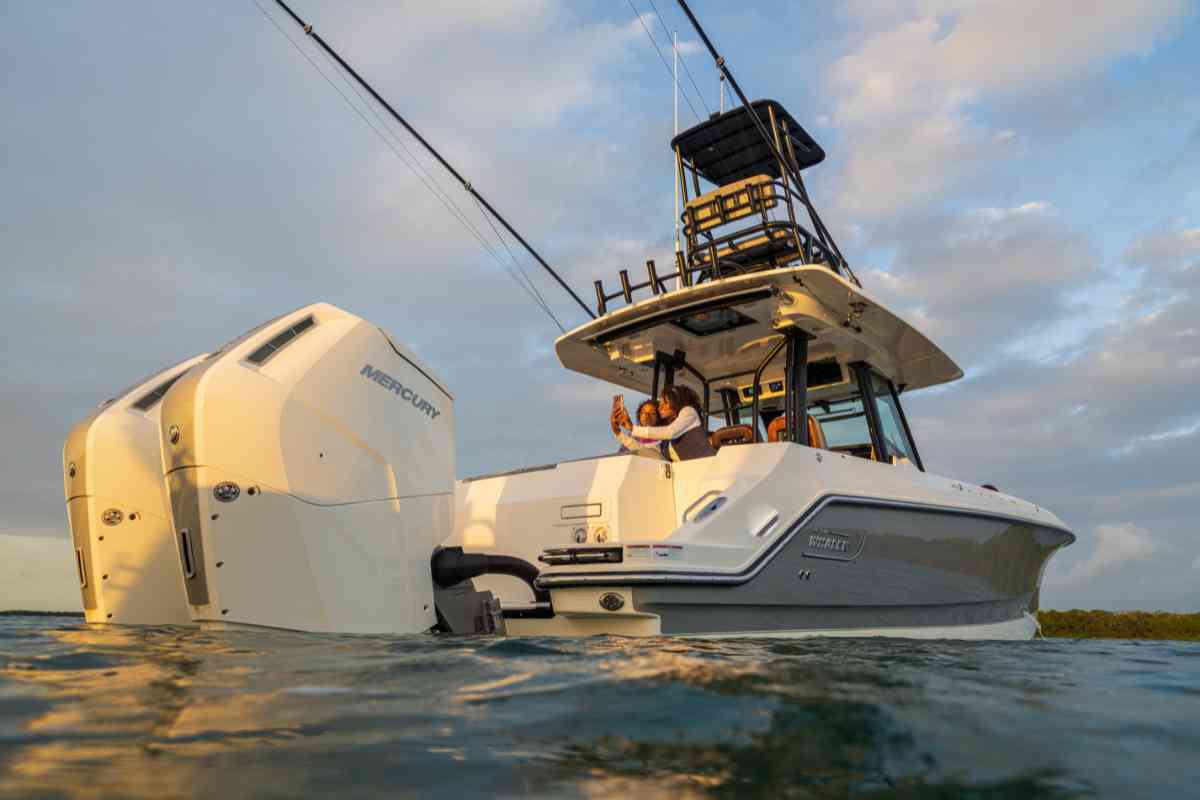When Did Boston Whaler Stop Using Wood in Their Boats?
Boston Whaler is a well-known brand of boats that has been around for over 60 years. The company has a reputation for building high-quality boats that are both durable and reliable. One of the things that Boston Whaler is known for is its use of wood in its boats. However, there has been some confusion over when Boston Whaler stopped using wood in its boats.

When did Boston Whalers stop using wood in their boats?
Boston Whaler stopped using wood in its boats in the mid-1990s. The company made the decision to switch to using composite materials instead of wood to increase the durability and longevity of its boats.
This change was made in response to concerns about the potential for wood to rot or decay over time, which could compromise the integrity of the boat’s hull and other components.
Since then, Boston Whaler has continued to innovate and improve its boats, using the latest materials and technologies to create boats that are both strong and lightweight.
Boston Whaler: An Overview
Boston Whaler is a boat manufacturer that has been around since 1958. The company was founded by Richard Fisher, who had a background in the aerospace industry and a passion for boating. Fisher teamed up with designer Ray Hunt to create a new type of boat that would be unsinkable, safe, and reliable.
The first Boston Whaler boat was the 13-foot utility boat, which was an instant success. The boat’s unique design, which featured a foam-filled fiberglass hull, made it virtually unsinkable. This design was inspired by the Hickman Sea Sled, which was a revolutionary boat design at the time.
Over the years, Boston Whaler has continued to innovate and improve its boat designs. The company has produced a wide range of boats, including fishing boats, pleasure boats, and yachts. Today, Boston Whaler is owned by the Brunswick Corporation, which is a leading manufacturer of marine products.
One of the key features of Boston Whaler boats is their unsinkable design. This is achieved through the use of foam-filled fiberglass hulls, which provide buoyancy and stability even if the boat is swamped or damaged. This design has made Boston Whaler boats popular with boaters who value safety and reliability.
In terms of wood usage, Boston Whaler has a history of using wood in its boats. However, the company has also experimented with other materials, such as fiberglass and aluminum. It is unclear exactly when Boston Whaler stopped using wood in its boats, but it is likely that this transition occurred gradually over time as new materials became available and more popular.

Boston Whaler is a respected and well-known brand in the boating industry. The company’s commitment to safety, reliability, and innovation has made it a popular choice for boaters around the world.
Wood in Boston Whaler Boats
Boston Whaler boats have been known for their durability and unsinkable design since their inception in the late 1950s. However, early models of Boston Whaler boats did contain wood in their construction.
Use of Wood in Early Models
The earliest Boston Whaler boats were constructed with a wood hull and mahogany wood trim. The hull was made of marine-grade plywood, which was then coated with fiberglass to increase its strength and durability. The mahogany wood trim was used to add a decorative touch to the boat’s design.
As Boston Whaler boats became more popular, the company began to experiment with other materials to reduce the amount of wood in their construction.
Transition from Wood to Fiberglass
In the mid-1960s, Boston Whaler began to transition from wood to fiberglass in their boat construction. The company’s first all-fiberglass boat, the 16-foot Nauset, was introduced in 1961. This boat was a huge success and paved the way for Boston Whaler to continue using fiberglass in their boat construction.
By the late 1960s, Boston Whaler had completely eliminated wood from their boat construction. Instead, they used foam-filled fiberglass to create a durable and unsinkable design. This new construction method allowed Boston Whaler boats to be lighter, faster, and more fuel-efficient than their wooden predecessors.
While early Boston Whaler boats did contain wood in their construction, the company transitioned to fiberglass in the mid-1960s and has not used wood in their boats since. This shift to fiberglass allowed Boston Whaler to create boats that were stronger, faster, and more fuel-efficient than their wooden predecessors.
Fiberglass and Unibond Construction

Boston Whaler’s transition from wood to fiberglass construction began in the early 1960s. The company’s founder, Richard T. Fisher, recognized the advantages of fiberglass over wood for boat building. Fiberglass is lighter, more durable, and requires less maintenance than wood.
Boston Whaler’s unique Unibond construction method involves bonding the hull and deck together to create a single unit. This construction method provides superior strength, durability, and flotation. The Unibond hulls are made by spraying fiberglass and resin into a mold, which is then cured to create a solid, one-piece hull.
The gelcoat is then applied to the hull to provide a smooth, glossy finish that is resistant to fading, chalking, and cracking. The gelcoat also provides protection against UV rays and other environmental factors.
Boston Whaler’s Unibond construction method has been refined over the years, with improvements in materials and manufacturing processes. The company’s commitment to quality and innovation has made Boston Whaler boats some of the most sought-after vessels on the water.
The Role of Foam in Boston Whaler Boats
Boston Whaler is known for its unique foam core construction, which provides the boats with exceptional buoyancy and stability. The company has been using closed cell polyurethane foam in its boats for many years. This foam is water-resistant, which means that it will not absorb water and become waterlogged.
The foam used in Boston Whaler boats plays a crucial role in ensuring that the boat remains afloat even when it is completely swamped with water. The foam core construction of the boat provides added strength and rigidity to the hull, making it more durable and resistant to damage.
It is worth noting that wet foam can compromise the integrity of the boat’s structure. Wet foam can occur when water enters the boat through unsealed openings or when water accumulates on the deck during non-use of the boat. Therefore, it is essential to take good care of the boat to prevent water from entering and accumulating in the foam core.
Boston Whaler’s proprietary foam is created by combining two different agents that react with each other to create the foam. The foam gun must be used to fill the cavity inside the hull within 45 seconds before the foam starts to rise. This process ensures that the foam is evenly distributed throughout the hull, providing the boat with optimal buoyancy and stability.
The foam used in Boston Whaler boats is a critical component that provides the boats with exceptional buoyancy, stability, and durability. The closed cell polyurethane foam used in the boats is water-resistant and helps prevent the boat from becoming waterlogged. Proper care must be taken to prevent water from entering and accumulating in the foam core, which can compromise the boat’s structure.

Boston Whaler Models and Their Features
Common Features and Specifications
Most Boston Whaler models have common features and specifications, such as their unsinkable design, foam-filled hull, and high-quality construction. The company also uses high-grade stainless steel hardware to ensure durability and longevity.
All Boston Whaler models have comfortable seating arrangements, with some models featuring adjustable seats and a variety of seating options. The boats also have ample storage space, with some models featuring built-in coolers and fish boxes.
Unique Features per Model
Each Boston Whaler model has unique features that make it stand out from the rest. For instance, the Montauk model is known for its classic design and versatility, making it perfect for fishing, cruising, and water sports. It features a center console layout, a spacious cockpit, and a deep-V hull for a smooth ride.
The Super Sport model is another popular choice, known for its compact size and maneuverability. It features a low profile, making it easy to tow and store, and it is perfect for day trips and water sports. The boat has a side console layout, with a forward-facing seat and a reversible pilot seat.
The Dauntless model is designed for fishing and cruising, with a center console layout and a spacious cockpit. It features a self-bailing deck, a livewell, and a built-in cooler. The boat also has a T-top for shade and protection from the elements.
The Outrage model is a high-performance boat, designed for offshore fishing and cruising. It features a deep-V hull, a center console layout, and a spacious cockpit. The boat also has a T-top for shade and protection from the elements, and it is equipped with a variety of fishing features, such as rod holders and a livewell.
Finally, the Revenge model is a classic Boston Whaler model, known for its rugged design and durability. It features a center console layout, a deep-V hull, and a spacious cockpit. The boat is designed for offshore fishing and cruising, and it is equipped with a variety of fishing features, such as rod holders and a livewell.
Boston Whaler has developed several popular models over the years, each with unique features and specifications. Whether you are looking for a boat for fishing, cruising, or water sports, there is a Boston Whaler model that will meet your needs.
Restoration and Maintenance of Boston Whaler Boats
Boston Whaler boats are known for their durability and longevity. However, over time, even the best-built boats can experience wear and tear. Regular maintenance and restoration can help extend the life of a Boston Whaler boat.
One common issue that can arise in older Boston Whaler boats is rotting wood. Boston Whaler stopped using wood in their boats in the mid-1990s, but older boats may still have wood components that require maintenance or replacement. If you are restoring an older Boston Whaler boat, it is important to inspect all wood components for rot and replace them as necessary.
Boat construction is another important factor to consider when restoring or maintaining a Boston Whaler boat. Boston Whaler boats are known for their Unibond construction, which involves foam-filled hulls for added buoyancy and strength. It is important to ensure that the foam remains intact and that there are no areas where water can seep in and compromise the integrity of the hull.
Reinforcement is another key aspect of maintaining a Boston Whaler boat. Plywood is often embedded in the deck area for added strength, and it is important to ensure that this reinforcement remains intact and in good condition.
Mounting points are also important to consider when restoring or maintaining a Boston Whaler boat. These are the points where accessories such as cleats and rod holders are attached to the boat. It is important to ensure that these mounting points are secure and that there is no water intrusion that could compromise their strength.
Regular maintenance and restoration can help ensure that your Boston Whaler boat remains in top condition for years to come. By inspecting and addressing any issues as they arise, you can help extend the life of your boat and enjoy many more years of boating adventures.

Boston Whaler Boats for Sale
Boston Whaler boats are known for their unsinkable design and durability. They are also popular in the boating market for their high performance and trim. Boston Whaler boats are available for sale both new and used.
When searching for a Boston Whaler boat for sale, it is important to consider the model and year of the boat. Some older models may still use wood in their construction, while newer models are made entirely of fiberglass. It is important to verify the materials used in the boat’s construction before making a purchase.
Boston Whaler boats are also known for their high resale value. They are in high demand in the used boat market and can often be sold for a good price. When purchasing a used Boston Whaler boat, it is important to inspect the boat thoroughly and ensure that it is in good condition.
In addition to Boston Whaler boats, there are also other brands that offer similar features and performance. Edgewater boats, for example, are known for their unsinkable design and high-performance capabilities. It is important to research and compare different brands and models before making a final decision on a boat purchase.
Overall, Boston Whaler boats are a great investment for boaters looking for a high-performance, durable, and reliable boat. Whether purchasing new or used, it is important to do your research and ensure that the boat meets your needs and expectations.
The Impact of Boston Whaler’s Design on Boat Manufacturing
Boston Whaler’s innovative design has had a significant impact on the boat manufacturing industry. The company’s decision to use composite materials instead of wood in their boats was a game-changer. This move not only made their boats unsinkable but also eliminated the need for constant maintenance that traditional wooden boats require.
By using foam-filled fiberglass, Boston Whaler created a unique hull design that was not only unsinkable but also provided a stable and smooth ride. This design included a tank cavity that was filled with foam, providing additional buoyancy and stability.
The use of composite materials also allowed Boston Whaler to create boats with unique and modern designs. The elimination of wood from the manufacturing process meant that the boats had a sleek and modern look, with no need for teak or other traditional materials.
Boston Whaler’s design also had an impact on the interiors of boats. The foam-filled hull design allowed for more space and storage, as well as a quieter ride. The use of composite materials also made the boats easier to clean and maintain.
The success of Boston Whaler’s design has influenced other boat manufacturers to move away from wood and towards composite materials. This shift has led to the creation of boats that are not only unsinkable but also more durable and easier to maintain.
Boston Whaler’s decision to use composite materials instead of wood in their boats has had a significant impact on the boat manufacturing industry. Their innovative design has influenced other manufacturers to move away from wood and towards composite materials, resulting in boats that are more durable, easier to maintain, and have a modern and unique design.
Frequently Asked Questions
When did Boston Whaler switch to fiberglass construction?
Boston Whaler started using fiberglass construction in the early 1960s. The company was one of the first to use this material in boat building, which led to the development of the unsinkable foam-filled hull.
What materials were used in Boston Whaler boats before fiberglass?
Before fiberglass, Boston Whaler boats were constructed using wood. The older models had wood stringers and gunwales, while the transom and cowl face were made of wood.
How long do Boston Whaler boats typically last?
Boston Whaler boats are known for their durability and longevity. With proper maintenance, a Whaler boat can last for decades.
What are some common issues with Boston Whaler transoms?
Transom rot is a common issue with older Boston Whaler boats. This occurs when water seeps into the wood core of the transom, causing it to rot. It is important to inspect the transom regularly and address any signs of rot immediately.
What is the lifespan of a Boston Whaler boat?
The lifespan of a Boston Whaler boat depends on various factors such as maintenance, usage, and storage. With proper care, a Whaler boat can last for many years.
Are there any particular years or models of Boston Whaler boats that are known for having wooden components?
Most of the older Boston Whaler boats had wooden components such as stringers and gunwales. However, the company started phasing out wood in the 1990s, and most newer models are constructed using composite materials.
